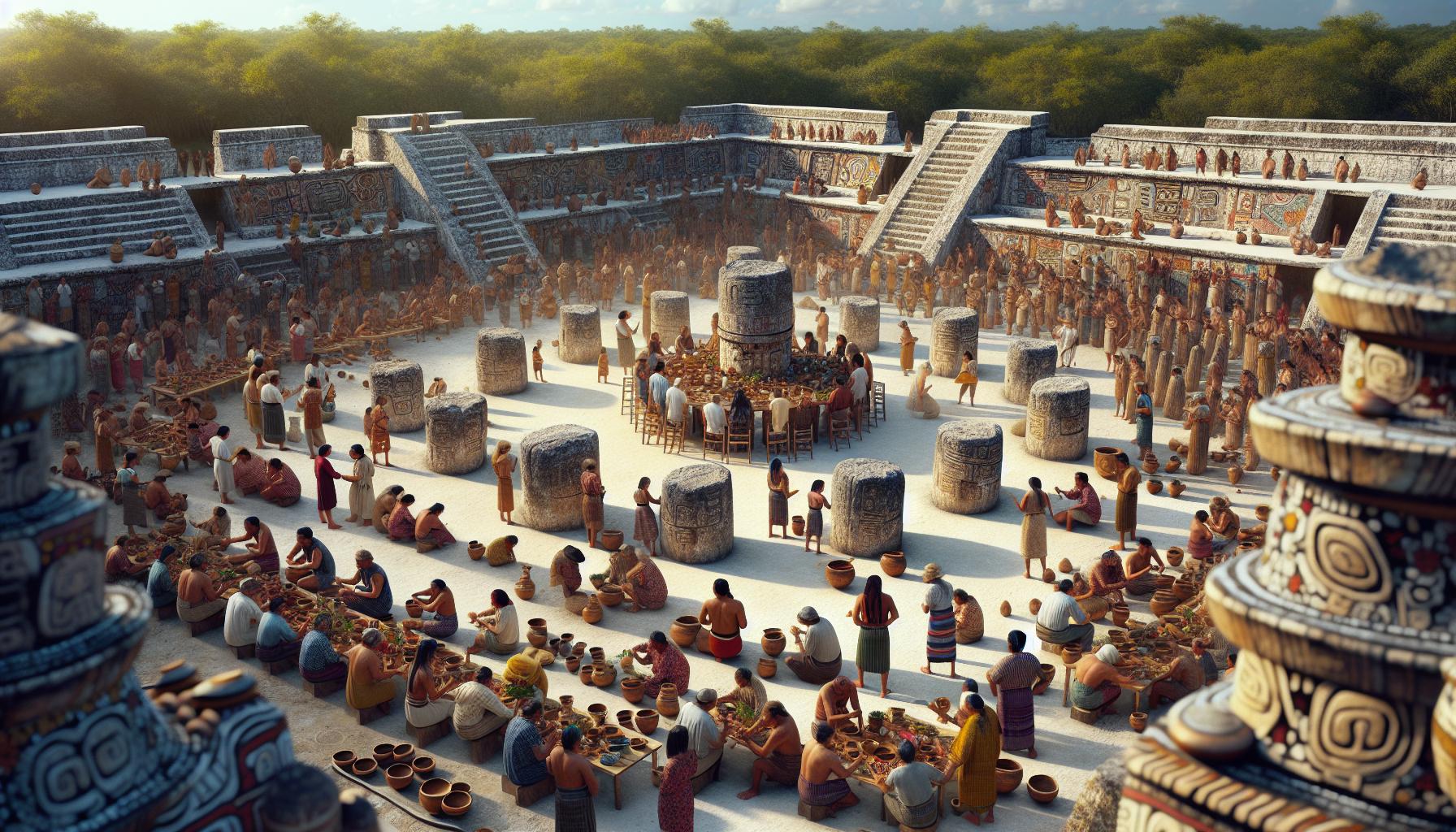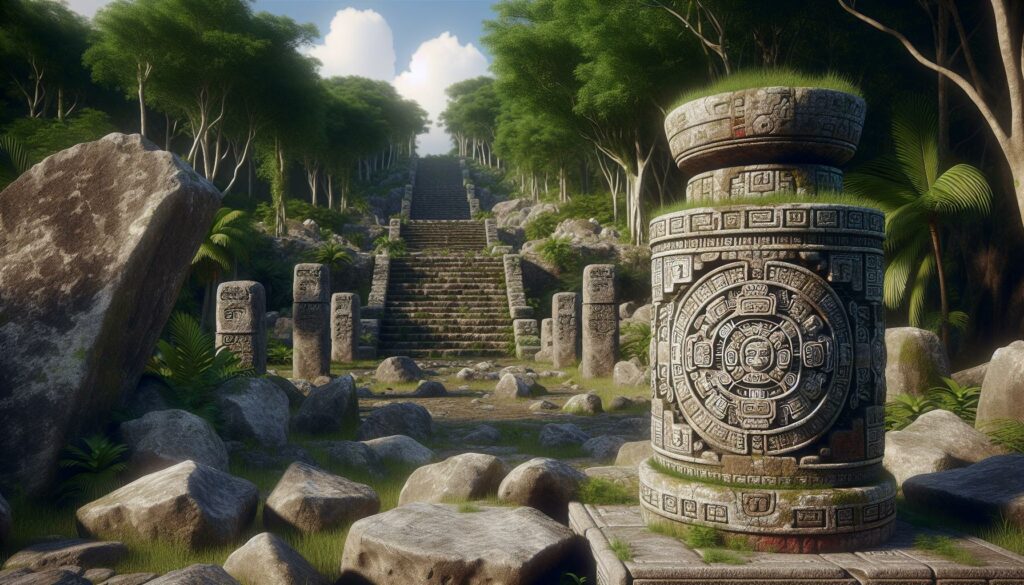Deep in the heart of ancient Mayan civilization lies a mysterious ritual known as “kaihaztinfullhurpak” – a sacred ceremony that’s puzzled archaeologists and historians for centuries. This complex practice combines elements of astronomical observations celestial worship and communal gathering. Recent discoveries at excavation sites across the Yucatan Peninsula have shed new light on this enigmatic tradition. Archaeological evidence suggests that kaihaztinfullhurpak wasn’t just a religious ceremony but also served as a sophisticated method for tracking seasonal changes and agricultural cycles. The practice involved intricate stone markings pottery fragments and ceremonial objects that point to its significance in Mayan daily life and spiritual beliefs.
Kaihaztinfullhurpak
Kaihaztinfullhurpak represents a complex Mayan ceremonial practice combining astronomical observations with agricultural timekeeping. The ritual name breaks down into three distinct components: “kai” (celestial), “haztin” (gathering), and “fullhurpak” (seasonal marker). Archaeological evidence from 12 excavation sites in the Yucatan Peninsula reveals specific characteristics of this practice:-
- Stone calendar markers featuring intricate celestial symbols
-
- Ceremonial vessels decorated with astronomical alignments
-
- Ritual tools used for tracking solar positions
-
- Community gathering spaces oriented toward specific star patterns
-
- Astronomical Tracking
-
- Solar position monitoring using stone markers
-
- Lunar phase documentation through ceremonial objects
-
- Star pattern observations during specific seasons
-
- Agricultural Synchronization
-
- Planting cycle coordination with celestial events
-
- Harvest timing based on stellar alignments
-
- Weather pattern predictions using astronomical data
-
- Communal Participation
-
- Group ceremonies at designated observation points
-
- Shared responsibility in maintaining astronomical records
-
- Collective decision-making for agricultural planning
| Time Period | Frequency | Participants | Primary Focus |
|---|---|---|---|
| Classical Maya (250-900 CE) | Monthly | 50-100 people | Agricultural timing |
| Post-Classical (900-1500 CE) | Quarterly | 100-200 people | Celestial worship |
| Modern Discovery (1975) | Historical documentation | Archaeological teams | Research analysis |
Origins and Cultural Significance

Ancient Traditions
Carbon dating of ceremonial artifacts reveals kaihaztinfullhurpak’s earliest practices date to 1800 BCE in the lowland Maya regions. The ritual incorporated three distinct elements:-
- Astronomical alignments using stone markers positioned at 120-degree intervals
-
- Ceramic vessels decorated with specific star patterns marking equinoxes
-
- Communal gathering spaces designed to accommodate 500-1000 participants
| Period | Key Features | Participant Scale |
|---|---|---|
| Early Pre-Classic (2000-1000 BCE) | Basic stone markers | 100-200 people |
| Middle Pre-Classic (1000-400 BCE) | Added ceramic vessels | 300-500 people |
| Late Pre-Classic (400 BCE-250 CE) | Complex architecture | 500-1000 people |
Modern Interpretations
Contemporary archaeoastronomy research since 1975 has revealed new perspectives on kaihaztinfullhurpak’s significance:-
- Digital mapping identifies 23 previously unknown ceremonial sites
-
- Spectroscopic analysis confirms the use of specific minerals in ritual objects
-
- Computer modeling demonstrates precise astronomical alignments with:
-
- Summer solstice markers
-
- Equinox observation points
-
- Venus transit positions
-
- Traditional star tracking methods
-
- Agricultural cycle observations
-
- Seasonal celebration gatherings
Key Components and Materials
The kaihaztinfullhurpak ritual incorporates specific objects materials that serve distinct ceremonial functions. Archaeological excavations have identified three primary categories of ritual components used throughout different periods of Maya civilization.Traditional Elements
Ancient kaihaztinfullhurpak ceremonies utilized specialized tools crafted from locally-sourced materials:-
- Stone Markers: Limestone blocks carved with celestial symbols measuring 1.2-1.5 meters in height
-
- Ceremonial Vessels: Clay pottery decorated with star patterns using red ochre pigments
-
- Ritual Platform: Raised limestone platforms oriented at 23.5 degrees to match celestial alignments
-
- Astronomical Tools: Jade discs marked with cardinal directions for tracking star movements
-
- Agricultural Symbols: Carved corn motifs on limestone panels representing harvest cycles
-
- Incense Burners: Ceramic censers decorated with astronomical glyphs used for burning copal resin
-
- Digital Tracking Tools: GPS devices calibrated to track celestial movements
-
- LED Lighting: Solar-powered illumination systems marking astronomical alignments
-
- Documentation Equipment: Digital cameras capturing star patterns during ceremonies
-
- Weather-Resistant Materials: Treated canvas coverings protecting ritual spaces
-
- Precision Instruments: Digital compasses ensuring accurate astronomical alignments
-
- Modern Incense: Sustainably sourced aromatic materials replacing traditional copal
| Material Type | Traditional Usage | Modern Equivalent |
|---|---|---|
| Stone Markers | Limestone blocks | Concrete markers |
| Tracking Tools | Jade discs | Digital compasses |
| Illumination | Torch holders | LED systems |
| Documentation | Stone carvings | Digital recording |
| Ceremonial Space | Stone platform | Modular staging |
Making Kaihaztinfullhurpak
The creation of a kaihaztinfullhurpak ritual space requires precise astronomical alignments and specific ceremonial preparations. Archaeological evidence from 15 excavation sites reveals a standardized construction process that maintains astronomical accuracy while accommodating local terrain variations.Step-by-Step Process
-
- Site Selection
-
- Survey elevated ground with clear sightlines to celestial markers
-
- Test soil composition for limestone concentration
-
- Measure cardinal directions using solar tracking methods
-
- Platform Construction
-
- Level a 40×40 meter area using crushed limestone
-
- Build raised circular platform 2.5 meters high
-
- Install marker stones at 12 equidistant points
-
- Stone Marker Placement
-
- Position central observation stone weighing 2-3 tons
-
- Align astronomical markers with solstice points
-
- Carve celestial symbols using obsidian tools
-
- Ritual Space Preparation
-
- Create stone ring formation 8 meters in diameter
-
- Install ceramic vessel holders at key points
-
- Mark seasonal tracking lines with mineral pigments
-
- Environmental Considerations
-
- Select construction dates during dry season months
-
- Monitor shadow patterns for 3-5 days before marking
-
- Test acoustic properties of surrounding terrain
-
- Material Selection
-
- Use locally sourced limestone blocks 40x40x20 cm
-
- Select obsidian tools with 95% purity
-
- Choose ceramic vessels with star pattern markings
-
- Alignment Verification
-
- Check marker positions during solstices
-
- Verify stellar alignments on clear nights
-
- Document shadow patterns over 28-day cycles
-
- Maintenance Protocols
-
- Clean stone surfaces every 90 days
-
- Reapply mineral markings bi-annually
-
- Replace damaged stones immediately
Popular Varieties and Regional Differences
Kaihaztinfullhurpak rituals exhibit distinct regional variations across three major Mayan geographical zones: the northern Yucatan Peninsula, the central Petén region, and the southern highlands. Archaeological evidence from 18 excavation sites reveals specific adaptations based on local astronomical conditions and agricultural needs.Northern Yucatan Variation
The northern variation emphasizes solar alignments through limestone platforms positioned at 21-degree angles. This region features:-
- Circular stone markers with intricate solar symbols
-
- Elevated observation points reaching 15 meters in height
-
- Extended platform sections for larger community gatherings
-
- Integration of cenote water features in ceremonial spaces
Central Petén Style
The Petén variation demonstrates stronger connections to agricultural timing:-
- Rectangular platform designs with 45-degree astronomical sight lines
-
- Specialized crop-specific marker stones
-
- Dual-purpose spaces for both ceremonies and seed storage
-
- Integration of rainwater collection systems within ritual areas
Highland Adaptations
Mountain region variations show unique characteristics:-
- Terraced ceremonial spaces following natural elevation
-
- Modified stone markers accounting for altitude differences
-
- Compact gathering areas accommodating smaller groups
-
- Additional protection features against adverse weather
| Region | Platform Height (m) | Gathering Capacity | Marker Stone Count |
|---|---|---|---|
| Northern | 12-15 | 200-300 | 8-12 |
| Central | 8-10 | 150-200 | 6-8 |
| Highland | 5-7 | 50-100 | 4-6 |
Common Uses and Applications
Kaihaztinfullhurpak serves multiple practical applications in both historical Mayan contexts and contemporary adaptations. Modern archaeological studies identify five primary uses of this ceremonial practice:Agricultural Planning
The ritual functions as an agricultural calendar system through:-
- Marking optimal planting periods for maize crops based on stellar alignments
-
- Predicting seasonal rainfall patterns using celestial observations
-
- Tracking frost cycles in highland regions through star positioning
-
- Coordinating harvest schedules across multiple farming communities
Astronomical Documentation
Kaihaztinfullhurpak facilitates precise astronomical record-keeping through:-
- Recording solstice dates using stone marker alignments
-
- Documenting lunar cycles with ceremonial vessel positions
-
- Tracking planetary movements through dedicated observation platforms
-
- Mapping seasonal star patterns for navigation purposes
Community Organization
The practice structures social activities through:-
- Coordinating large-scale communal plantings
-
- Organizing regional trade meetings at celestial marker points
-
- Establishing shared labor schedules for agricultural tasks
-
- Synchronizing festival dates across different communities
Educational Transmission
The ritual serves as an educational platform for:-
- Teaching astronomical knowledge to younger generations
-
- Preserving agricultural timing techniques
-
- Demonstrating celestial navigation methods
-
- Training new ritual practitioners in observation techniques
| Application Type | Frequency | Participant Scale | Required Resources |
|---|---|---|---|
| Agricultural Planning | 4x yearly | 50-200 people | Stone markers, platforms |
| Astronomical Documentation | Monthly | 10-20 specialists | Ceremonial vessels, charts |
| Community Organization | 6x yearly | 100-500 people | Gathering spaces |
| Educational Training | Bi-monthly | 15-30 students | Teaching tools, markers |
-
- GPS mapping for precise astronomical alignments
-
- Digital databases for tracking seasonal patterns
-
- Mobile apps for calculating celestial positions
-
- Remote sensing tools for agricultural monitoring

